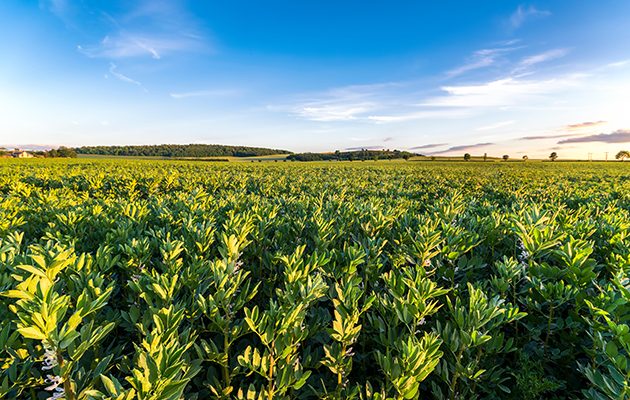There is absolute logic to eating more plants and less meat of questionable provenance, says Tim Field. So how do we get our fix of protein from the modern world of food and farming?
While Veganuary and meat-free Mondays may seem less than tempting, there is absolute logic in eating more plants and less meat (or better meat). But how to ensure you get your protein fix? Tim Field discusses the best protein sources from the modern world of food and farming.
For more on farming, read water meadow management: awash with good ideas.
BEST PROTEIN SOURCES
Detoxes and body cleansing: ’tis the season for good intentions and the shelving of bad habits. Among the current torrent of health professionals, environmentalists and animal activists encouraging us to eat more vegetables and less meat (we also say better meat), I have a compulsion to review my diet this year. However, I am loath to allow a dutiful meat-free-Monday drag into an entire month of withdrawal, as many welcome in a new year with Veganuary. There is, of course, absolute logic to eating more plants and less meat of questionable provenance, so how do we get our fix of protein from the modern world of food and farming?
Field beans, or fava beans (pictured) as they are also known, were a main source of protein from the Iron Age to the Agricultural Revolution, when greater numbers of livestock began to be eaten. Nowadays, field beans are rarely grown for our own consumption and the majority end up as livestock feed. What little is grown for eating is mostly exported, with markets in North Africa, the Middle East and even as far as Japan. Modern, international food trends see Middle Britain eating more falafel, houmous and other pulse-derived culinary treats, presenting a growing opportunity for our farmers; albeit substituting the chickpeas and other exotics for the mighty British-grown fava bean. Furthermore, our environmental conscience should tell us the majority of this plant protein is better eaten ourselves and leave cows to get fat on grass.
There are a staggering two million cans of baked beans – the nation’s favourite food – eaten each day in the UK. Sadly, these delicious haricot beans are grown abroad. But we are not limited to beans to provide for the table, and we have a great heritage in pea gastronomy. Peas pudding, mushy peas, carlin peas and many more dishes beyond have their place in traditional pulse cuisine using marrowfat, black, blue, yellow and other varieties of the wonderful pea. Hero of the pulse world, Hodmedod, has been raising the profile of home-grown peas and beans and is scooping numerous awards on the way, from best food producers at the BBC Food and Farming Awards to recognition for its Carlin peas as champion slow food product, also a Slow Food Ark of Taste product. Hodmedod has now produced a British-grown version of the classic baked bean using fava beans.
PULSES AND ACCOMPANYING BIODIVERSITY
The ample protein, fibre and vitamins have nutritional benefits but, for me, the greatest value of a pulse is the accompanying biodiversity they can harbour on the farm. You know instantly when they are in flower as the scent is overwhelming. Field beans provide a welcome source of nectar in late spring and a delicious, light honey for the beekeeper. And as a guest on a day’s shooting in Oxfordshire this season, it was no coincidence to see a covey of wild grey partridges while pegged in a field of germinating winter beans.
By January, the winter field beans have already germinated and the spring crop is lined up for drilling as soon as conditions allow from February onwards. As a broad-leaf plant with symbiotic, nitrogen-fixing bacteria, they are a valuable break-crop within cereal rotations, mitigating substantial costs in the subsequent artificial nitrogen fertiliser application. One of the great challenges of growing them is weed burden, as vacant space between rows of drilled seed leaves plenty of bare soil for weeds to establish. The weed inconveniently gains a boost from the fertility of the neighbouring nitrogen-fixing leguminous crop.
With moves to find alternatives to herbicides – either due to threats of efficacy, environmental or regulatory issues – there is now a growing interest to inter-crop beans with a cereal. There have been some positive results where the wheat mops up the natural fertility boost, and it seems the increased demand for nitrogen triggers the bacteria to work harder and produce more fertility. The in-field break-crop could also serve to reduce other pest issues, meaning less need for pesticides, and therefore host more beneficial insects, such as pollinators, predatory beetles and spiders.
The most famous of childhood poems gets it right: “Beans, beans, they’re good for your heart; The more you eat, the more you…” and so on. Flatulence aside, home-grown pulses should be enjoyed for all their worth, on the plate and in the field.
Follow Tim and Agricology @agricology





